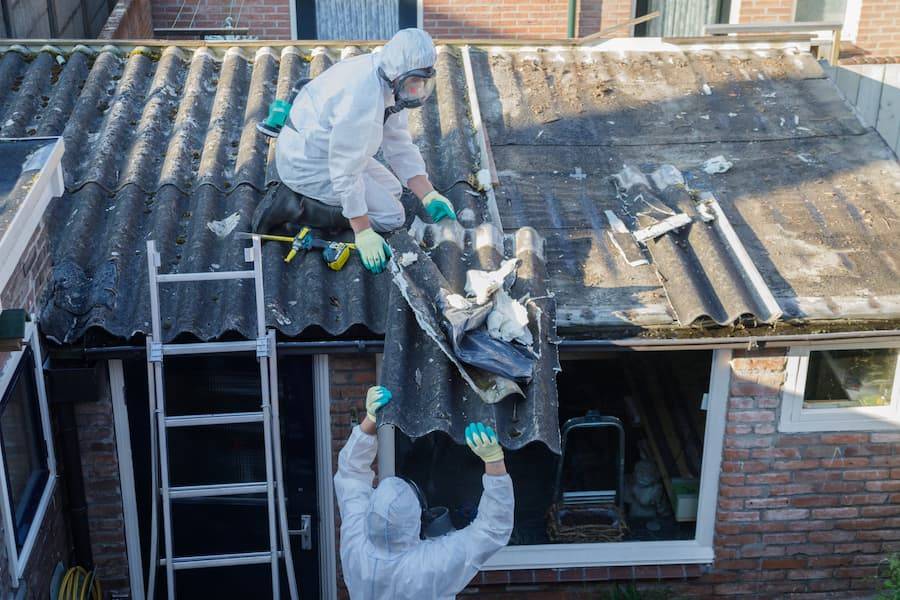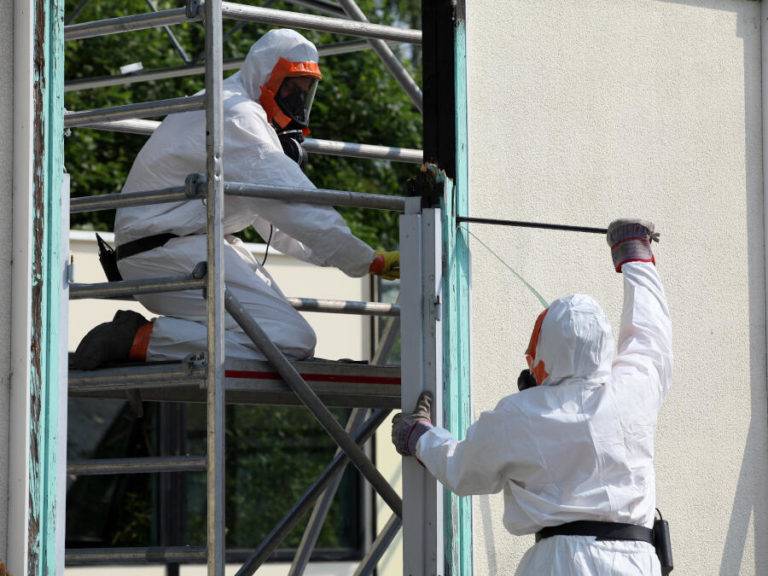Asbestos, once a commonly used building material, poses serious health risks if not handled and disposed of properly. To ensure the safety of yourself, your family, and the environment, it’s crucial to adhere to proper asbestos disposal procedures. Here are some key guidelines you should follow to safely dispose of asbestos:
Identifying Asbestos
Before any disposal process begins, accurately identify the presence of asbestos in your property. Asbestos identification typically involves engaging a certified surveyor to conduct thorough inspections. If you suspect its presence, seek professional assistance for testing and confirmation. Samples should be analysed by accredited laboratories to determine the presence and type of asbestos.
The Legal Requirements For Responsible Asbestos Disposal
Familiarise yourself with the legal regulations regarding asbestos disposal in your area. In the UK, the Control of Asbestos Regulations 2012 outlines specific requirements for the safe handling and disposal of asbestos-containing materials. It’s essential to stay updated with any amendments or additions to these regulations to ensure compliance, as well as your safety.
Get Professional Removal
Asbestos removal is a hazardous task that’s best left to certified professionals. Hire licensed asbestos removal contractors who have the expertise and equipment to safely handle and dispose of asbestos materials. These professionals follow strict protocols which minimise the risk of exposure and prevent any contamination during the removal process.

Secure Packaging & Transportation
Asbestos-containing materials must be carefully wrapped and sealed in heavy-duty polythene bags or containers. Double-bagging is recommended to minimise the risk of fibres escaping. Ensure that the packaging is durable and labelled with appropriate warning signs indicating its hazardous nature. This helps prevent accidental exposure and ensures that waste handlers are aware of the contents.
When transporting asbestos waste, take precautions to prevent the release of fibres. Use appropriate vehicles equipped with secure containment systems to minimise the risk of contamination during transit. Ensure that the vehicles are licensed to transport hazardous materials and that drivers are trained in handling asbestos waste safely.

Safe Disposal
Asbestos waste should only be disposed of at authorised waste facilities which are licensed to handle hazardous materials. Local authorities will have approved disposal sites which are in compliance with UK regulations, such as Green’s Recycling’s facilities. We have specialised disposal methods in place to ensure the safe containment and management of asbestos waste, reducing the risk of environmental contamination.
Reporting The Presence Of Asbestos
Some regions require you to report any asbestos disposal activities. Be sure to comply with any reporting requirements that are stipulated by your local laws. This may involve submitting documentation detailing the quantities and types of asbestos waste disposed of, as well as the methods used for disposal. If you’re using a Licensed Waste Carrier to manage it, they should be able to draw this documentation up for you. Reporting helps regulatory authorities monitor and enforce compliance with asbestos disposal regulations, ensuring that there is accountability and transparency in waste management practices.
Personal Protection
Prioritise personal safety throughout the disposal process. Wear appropriate personal protective equipment (PPE), including respiratory masks, gloves, and coveralls, to minimise the risk of exposure to asbestos fibres. PPE should be worn by all individuals involved in handling asbestos-containing materials, including removal contractors, waste handlers, and site personnel. Regular training and education on asbestos awareness and safety practices is essential to promote a culture of safety and risk mitigation.
Clean-Up
After completing asbestos removal and disposal activities, thoroughly clean the work area using approved methods to remove any remaining fibres. Dispose of cleaning materials as asbestos waste following the same protocols. It’s crucial to ensure that the work area is decontaminated and safe to prevent potential exposure to residual asbestos fibres. Follow decontamination procedures, including wet wiping surfaces, vacuuming with HEPA-filtered equipment, and conducting air monitoring to verify clearance levels.
Don't Take Any Risks When It Comes To Asbestos Disposal
Proper disposal of asbestos is paramount to safeguarding public health and the environment. By adhering to the recommended guidelines and regulations, you can effectively manage asbestos-containing materials while minimising the associated risks. Prioritise safety at every stage of the disposal process to protect yourself, your community, and future generations from the hazards of asbestos exposure. Implementing rigorous safety measures, engaging certified professionals, and complying with regulatory requirements are essential steps towards ensuring the safe and responsible disposal of asbestos waste.

